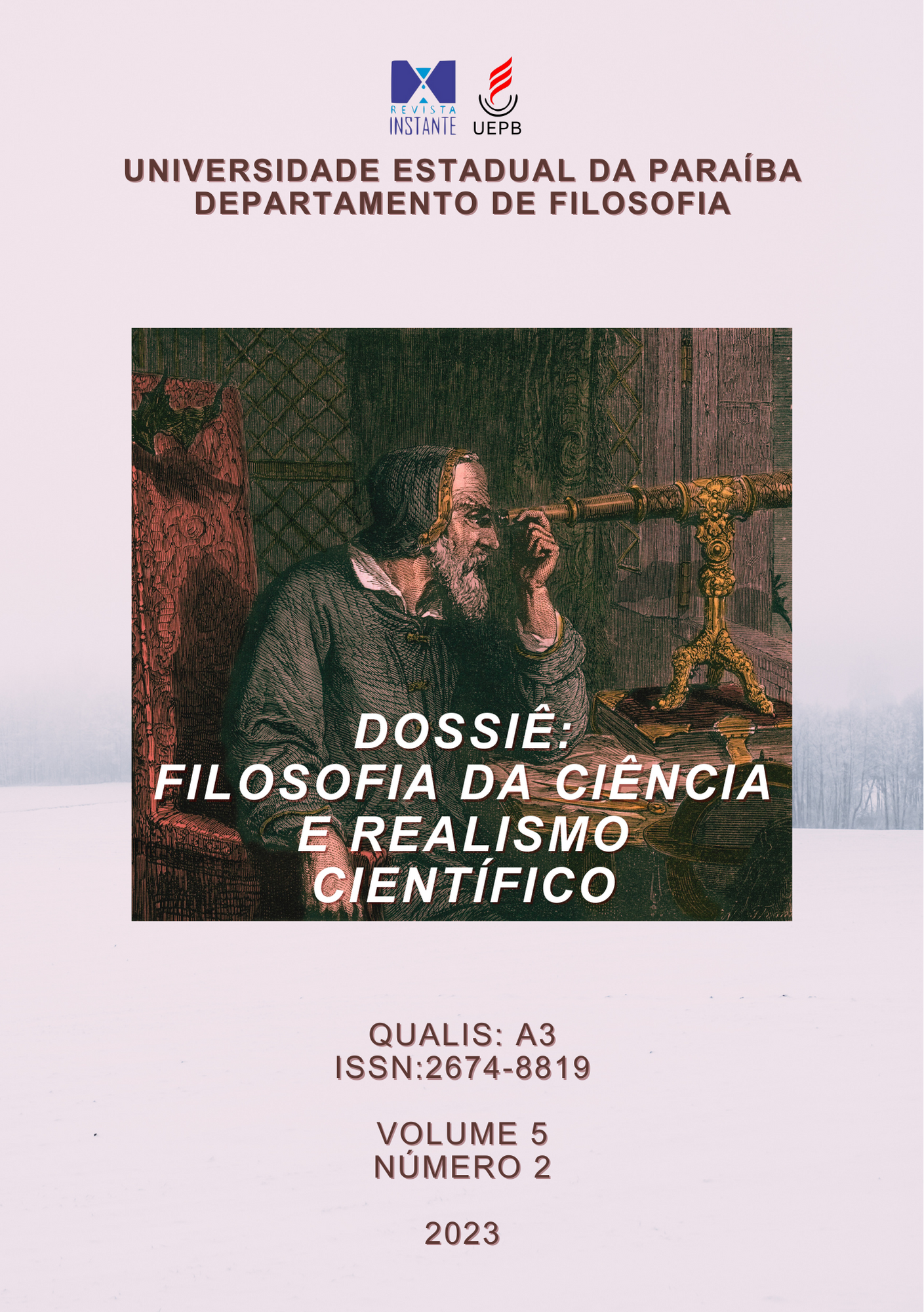REALISM AND THE FORTHCOMING REVOLUTION IN THE SCIENTIFIC STUDY OF CONSCIOUSNESS
Keywords:
Realism. Consciousness. Qualia. Explanatory gap. Materialism. Psychophysiological laws.Abstract
This paper is a study of the role of realist and antirealist attitudes in the forthcoming revolution in the scientific study of consciousness, more specifically the realism of qualia (subjective qualities). The first stage of such a revolution will be the empirical establishment of psychophysical laws in human beings, connecting brain states with the experience of qualia. One expects that the realist attitude will prevail in studies with humans, which can linguistically report the subjective results of manipulations carried out in the sensorium of each perceptual modality. With non-human animals, the linguistic function will be replaced by the establishment of classes of sensory discernment, expressible through the activation of levers. In this case, the instrumentalist (anti-realist) interpretation should predominate, in which case there would be no psychophysiological laws per se, but laws correlating brain states with classes of discernment. The realistic interpretation of qualia would still be tenable, guided by the establishment of a general theory of consciousness, which would encompass non-human animals, and supported by manipulation experiments on the human sensorium that would allow us to experience new qualia.
References
ALLEN, K.; QUINLAN, P.; ANDOW, J. & FISCHER, E. What is it like to be colour-blind? A case study in experimental philosophy of experience. Mind & Language, v. 37, pp. 814-839, 2022.
BOGEN, J.E. On the neurophysiology of consciousness. I. An overview. II. Constraining the semantic problem. Consciousness and Cognition, v. 4, pp. 52-62, 137-158, 1995.
BUTCHVAROV, P. Metaphysical realism. In: Audi, R. (org.). Cambridge Dictionary of Philosophy. 2a ed. Cambridge: Cambridge University Press, pp. 562-563, 1999.
CARACHO, C. A . & PESSOA Jr., O. História contrafactual da tectônica de placas. In: CHIBENI, S.S. et al. (orgs.). Filosofia e historia de la ciencia en el Cono Sur: selección de trabajos del X Encuentro. Córdoba (AR): AFHIC, pp. 433-444, 2018.
CHALMERS, D. J. The conscious mind: in search of a fundamental theory. New York: Oxford University Press, pp. 161-168, 1996.
__________. O enigma da consciência. Scientific American Brasil, vol. Especial 4: “Segredos da mente”, junho de 2004, pp. 40-49. Original em inglês: 1995.
DENNETT, D. Quining qualia. In: MARCEL, A.J. & BISIACH, E. (orgs.). Consciousness in contemporary science. Oxford: Oxford University Press, pp. 42-77, 1988.
FODOR, J. A. The mind-body problem. Scientific American, v. 244, p. 1. pp. 124-132 e 148, 1981.
KOCH, C.; MASSIMINI, M.; BOLY, M. & TONONI, G. Neural correlates of consciousness: progress and problems. Nature Reviews Neuroscience, v. 17, pp. 307-322, 2016.
KUHN, T.S. The structure of scientific revolutions. 2a ed. Chicago: University of Chicago Press, 1970.
LEVINE, J. Materialism and the explanatory gap. Pacific Philosophical Quarterly, v. 64, pp. 354-361, 1983.
LOGOTHETIS, N.K. Visão: uma janela da consciência. Scientific American Brasil Especial, v. 4: Segredos da mente, pp. 20-27, 2004. (Orig. em inglês: Scientific American, v. 281, n. 5, p. 68-75, 1999.)
LOW, P.; PANKSEPP, J.; REISS, D.; EDELMAN, D.; VAN SWINDEREN, B. & KOCH, C. The Cambridge declaration on consciousness, 2012. Disponível em: <http://fcmconference.org/img/CambridgeDeclarationOnConsciousness.pdf>.
PANKSEPP, J. Affective neuroscience: the foundations of human and animal emotions. New York: Oxford University Press, 1998.
PENFIELD, W. The cerebral cortex in man. I. The cerebral cortex and consciousness. Archives of Neurology and Psychiatry, v. 40, pp. 417- 442, 1938.
PESSOA Jr., O. Concepções materialistas sobre a sede da consciência. História e Filosofia da Biologia, São Paulo, v. 15, pp. 93-136, 2020.
__________. The colored-brain thesis. Filosofia Unisinos - Unisinos Journal of Philosophy, São Leopoldo, v. 22, pp. 84-93, 2021.
__________. Qualidades sensoriais e materialismo na filosofia da mente. In: PERUZZO Jr., L.; CANDIOTTO, K.B.B. & KARASINSKI, M. (orgs.). Tendências contemporâneas de filosofia da mente e ciências cognitivas. Curitiba: Editora PUCPress, 2023a, pp. 243-263.
__________. A tese da identidade mente-corpo e o fisicismo qualitativo. A sair em Lampião, Maceió, v. 4, 2023b.
RUSSELL, B. (1978). Análise da matéria. Trad. N.C. Caixeiro. Rio de Janeiro: Zahar. Original em inglês: 1927.
STRAWSON, G. A hundred years of consciousness: ‘a long training in absurdity’. Estudios de Filosofía, Medellín, v. 59, pp. 9-43, 2020.
TYNDALL, J. Scientific materialism. In: Tyndall, J. Fragments of science: a series of detached essays, addresses and reviews. Vol. 2. 6a ed. London: Longman, 1879. Original: 1868.










